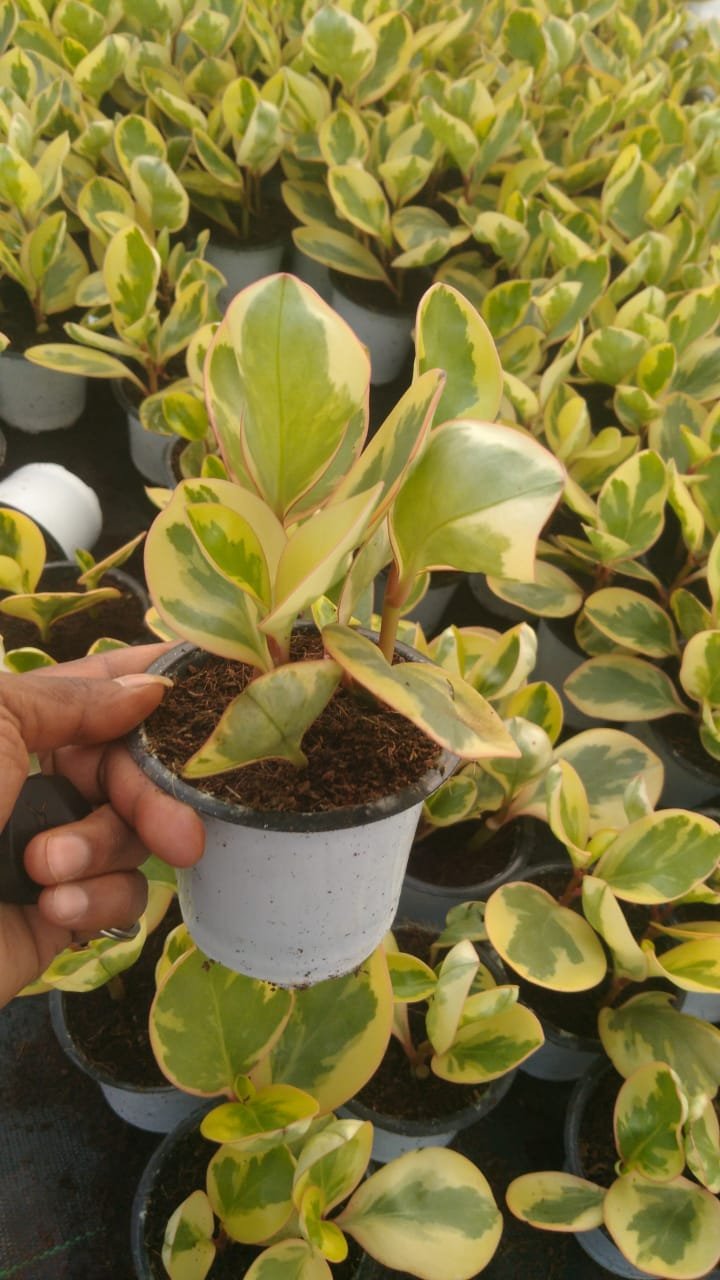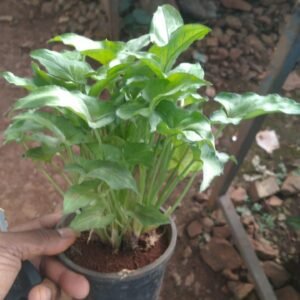Piperomia, often affectionately referred to as pipromiya, is a delightful genus of tropical plants known for their attractive foliage, compact growth habits, and ease of care. With over a thousand species, Piperomia offers a variety of shapes, colors, and textures, making it a popular choice among houseplant enthusiasts. Here’s a closer look at this charming plant, its characteristics, care requirements, and why it deserves a place in your indoor garden.
Overview of Piperomia
Piperomia is characterized by its thick, fleshy leaves, which can come in a range of colors from deep green to variegated patterns of white, yellow, and red. The leaves often have a waxy texture, adding to their visual appeal. These plants typically grow upright or trailing, making them versatile for various display options, from shelves to hanging baskets.
Some popular species of Piperomia include:
- Piperomia obtusifolia (also known as the baby rubber plant): This species features glossy, round leaves and can be quite bushy.
- Piperomia caperata (often called Ripple Peperomia): Known for its textured, heart-shaped leaves with pronounced ribbing, it adds a unique look to any collection.
- Piperomia hope: A charming hybrid with round, succulent leaves and a trailing growth habit, perfect for hanging arrangements.
Care and Maintenance
Caring for Piperomia is relatively easy, making them suitable for beginners and busy plant parents alike. Here are some essential care tips to keep your Piperomia thriving:
Light Requirements
Piperomia plants prefer bright, indirect light. They can tolerate lower light conditions, but too much shade may lead to leggy growth and diminished leaf color. Avoid placing them in direct sunlight, as this can scorch their leaves.
Watering
These plants prefer to be watered moderately. Allow the top inch of soil to dry out before watering again. Overwatering is a common issue with Piperomia, so ensure that the pot has good drainage to prevent water from accumulating at the bottom. Yellowing leaves can be a sign of overwatering, while shriveling leaves indicate that the plant needs more moisture.
Humidity
Piperomia enjoys higher humidity levels but can adapt to average household humidity. If you live in a particularly dry climate, consider placing a humidity tray beneath the plant or using a humidifier to maintain optimal moisture levels. Regular misting can also be beneficial, especially during the winter months.
Soil
A well-draining potting mix is essential for Piperomia. A standard indoor potting soil mixed with perlite or coarse sand will provide the necessary aeration and drainage. This ensures that the roots have enough oxygen while preventing excess moisture retention.
Propagation
Propagation of Piperomia is straightforward and can be done through leaf cuttings or by division. To propagate through cuttings, take a healthy leaf with a petiole (the stem that attaches the leaf to the main stem) and place it in water or moist soil. After a few weeks, roots should develop, allowing you to transfer the cutting to a pot.
Potential Issues
While Piperomia plants are generally resilient, they can still face some challenges. Pests such as mealybugs, spider mites, and aphids may occasionally appear. Regularly inspecting your plants and wiping down the leaves can help prevent infestations. If pests are found, treating with insecticidal soap or neem oil can effectively manage the problem.
Aesthetic Appeal
Piperomia plants are known for their decorative potential. Their varied leaf shapes and colors allow them to fit seamlessly into any decor style, from modern to bohemian. They can be displayed in decorative pots on shelves, tabletops, or in hanging baskets to create a lush, green environment. Their compact size makes them ideal for small spaces, and they can even be used as part of a mixed arrangement with other houseplants.






Reviews
There are no reviews yet.